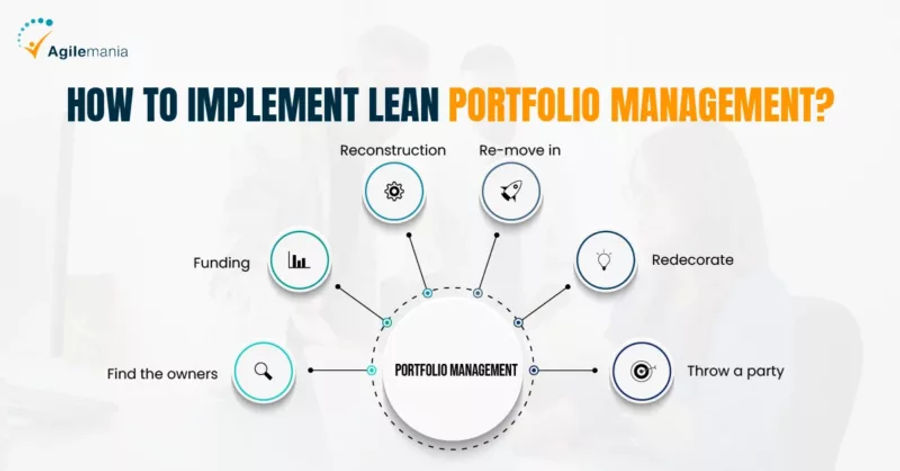What is LPM?
Lean Portfolio Management (LPM) involves connecting strategy to execution by using lean principles. Budgets are allocated to execute an enterprise's strategy by portfolio management teams.
An LPM portfolio of investments is creatively determined and actively managed throughout its investment life cycle, just like any other portfolio. Agile development and product development are aligned with business strategy through LPM, driving value to customers with products and solutions. Business agility can be improved by combining LPM and agile development practices.
What Are The Key Components Of Lean Portfolio Management?
The lean portfolio leadership team creates the goal of your company. Your team is granted funds that are decided by strategic needs, and they make sure your goals align with those needs.
To synchronize and coordinate the planning and feedback loops, the leadership team makes choices at a fixed cadence that is followed by both the operations (the tasks they carry out) and the governance (the reviews they conduct).
LPM operations
In order to connect strategy to execution The leadership team evaluates these targets on a regular basis
1. Start making a goal
Establish (and reevaluate every three months) the outcome-based goals and strategic themes.
2. Look for opportunities
Convert new ideas into investment candidates that are linked to the strategic mission.
3. Target value delivery
Create roadmaps based on market needs and anticipated effort size, which should be gathered during agile estimation and planning.
4. Value optimization
Establish clear priorities for initiatives in order to:
(1) drive detailed planning for the next quarter and
(2) balance the roadmap against known capacity constraints.
5. Examine market fit
"Go see" the incremental value demonstrated in team demos and validate the value hypotheses.
LPM Administration
The leadership team facilitates periodic reviews to achieve enterprise agility:
1. Review of strategy alignment
Confirm that the work is in line with the strategic intent once a quarter.
2. Examining the portfolio budget
Confirm that the budget allocations funding the team-of-teams (and empowering their decentralized decision-making) are best supporting the mission once a quarter.
3. Retrospective of the Portfolio Team
Look for ways to improve the way the portfolio leadership team operates, makes decisions, and achieves continuous value flow once a quarter.
4. Financial analysis of the portfolio
Compare spending trends on initiatives to targets and guardrails once a month to close the loop on agile budgeting Portfolio roadmap review
Share the updated initiative roadmap with all stakeholders once a month.
5. Examining investment opportunities
Approve funding for new investment opportunities based on their business case once a week (or recalibrate past funding decisions based on new feedback)
How To Put Lean Portfolio Management Into Action?
That being said, if you're not a startup, replat forming requires strong organizational change management practices. It will often feel like renovating a house while you live in it--experiencing high levels of stress and satisfaction. To continue this analogy, here are some tips for a lean home renovation:
1. Find the owners - Portfolio leadership teams are high-performing, cross-functional teams of servant leaders. Unleashing the power of a leadership team is no less important than empowering a development team. The first step is to find and form the group that will connect strategy to execution for a specific part of the organization. That is the portfolio leadership team.
2. Funding - As a result of LPM, the strategy and investment model has shifted from funding projects to funding teams of teams. This requires a deeper understanding (and visibility) of how team-of-teams build plans in relation to the strategic aims of the business.
3. Reconstruction - This needs to meet the requirements and expectations of the portfolio leadership team including where they want to go between their current situation and future situation. Develop an operating structure that embodies key pieces of LPM, incorporating your specific needs.
4. Re-move in - It can be a good idea to recalibrate the active work into learner constructs that better support the flow of value. You might also consider revisiting the rationale for your work (pivot or persevere?).
5. Redecorate - LPM introduces new decision-making techniques, like the emphasis on aligning work with a company's strategic goals. This drives the need to restructure existing work management systems as well as introduce new disciplines and additional clarity.
6. Throw a party - Surface positive feedback from retrospectives, and make sure to celebrate improved flow of value through the organization.
Searching For The Training Of Lean Portfolio Management?
If you are looking for the training of Lean Portfolio Management, then you have come to the right place. We have a team of experts who will help you understand the concept and how it can help you in your business. Our team of experts will teach you the fundamentals of portfolio management, which is a great way to increase productivity and improve your efficiency.
Find Our Upcoming Trainings
